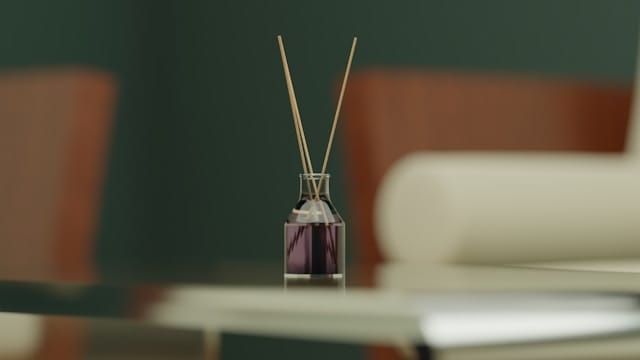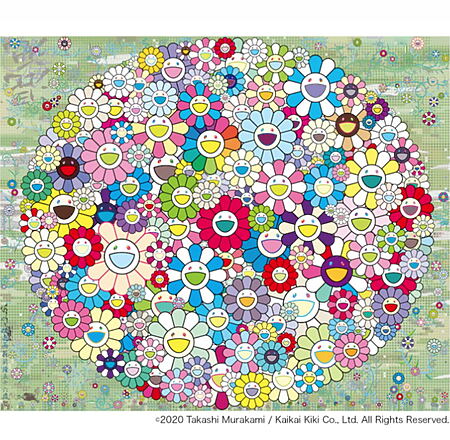In architecture and space design , it is time to talk about what rooms look like, how light and colors harmonize with each other or how materials address the sense of touch. But experiencing a room is far more complex and is not just limited to the impressions of a sensory organ.
Rather, architecture has the ability to address all the senses - from the feel to the sense of smell to acoustic perception. This multi -sensory experience, also referred to as synesthesia, expands the way in which rooms can be designed and experienced. It brings a deeper dimension into the design that goes far beyond aesthetic aspects.
Synesthesia describes the phenomenon in which two or more senses merge together and lead to a holistic perception. This multi -sensory design is often subtle in architecture, but profound. It creates spaces that are not only considered, but feel and experience. By integrating visual, haptic, acoustic and olfactory elements, the room becomes a stage on which all the senses are in line with each other.
The role of the smell in space design
In art and design, the sense of smell the most underestimated sense. Because: While colors, shapes and materials are in the foreground, the fragrance also plays an important role in how a room is perceived. Smells have the special ability to arouse memories and influence moods. A well -designed space uses this effect to strengthen the feeling of comfort, elegance or energy.

photo of filip baotić @filipbaotic, via unsplash
In the interior design there is a silent but effective movement towards multisensorical design, in which fragrances are used to complete the experience of a room. Exclusive room fragrance diffuser are not only functional elements that ensure a pleasant smell, but also aesthetic objects that support the design of a room. These diffuse can be deliberately integrated into the room concept and strengthen the visual and tactile experience with olfactory stimuli.
Acoustics and the perception of rooms
A room that is visually perfectly designed can quickly lose to the atmosphere if the acoustic conditions are not correct. Poor acoustics can lead to a room perceived as uncomfortable or even uncomfortable, even if it is visually impressive. It is therefore important to integrate acoustic elements into the design that not only upgrade the room optically but also sounds.
In modern architecture, increasing importance is placed on sound design . Materials such as felt, carpets or wood absorb sound and create an acoustic softness that calms the room. At the same time, Klang can also be used in a targeted manner to create certain emotions.
A room with hard surfaces and echoes looks more dynamic and energetic, while softer materials and steamed noises create a soothing, intimate atmosphere. Playing with these acoustic effects expands the synesthetic experience of a room.
Haptics: The touch of space and material
While the sense of smell often acts in secret and the acoustics subtly fills the room, the sense of touch is a direct, conscious experience in space design. The feel of materials is one of the most immediate experiences that the architecture offers. It is the touch, the feeling of surfaces that makes a space tangible. Smooth, cool surfaces such as glass and marble give a feeling of elegance and precision, while warm, structured materials such as wood or fabrics radiate security and comfort.
Room design is not just about what you see, but also about what you feel. The haptic experience of a room shapes the first impression as well as the visual perception. Materials that are touched tell stories - be it the rough texture of a natural stone or the gentle softness of a high -quality leather armchair. This interplay of the senses brings an emotional depth into architecture that goes beyond pure functionality.
The interaction of the senses: the art of multi -sensory design
Synesthesia in space design means that there is no point for itself. Every meaning complements and increases the perception of the other. The interaction of visual, acoustic, haptic and olfactory elements creates a spatial harmony that makes the room a complete, immersive experience.
An example of this is the integration of room fragrances in minimalist -designed rooms. While the visual design remains reserved and clear, room fragrances add another dimension that subtly changes the room. The fragrance fills the room invisible, but brings an emotional response with it that does not disturb the minimalist style , but complements. The art of space fragrance not only sees the room, but also felt.
The architecture and design of the present is about how rooms can offer a holistic experience. Synesthetic approaches challenge designers and architects to create spaces that appeal to all the senses and touch people at different levels. In this way, spaces become more than bare places, they become emotional experiences that are remembered.

The influence of art on multisensory design
There are also numerous examples of synaesthetic approaches in art Many artists have tried to combine several senses in their works over the centuries. These multisensory approaches that can be found in art history have also influenced modern architecture. Installations that combine sound and image, or spaces that are made experienced by light and smell are no longer uncommon.
The bridge between art and architecture makes it possible not only to design rooms as functional places, but as places of emotion and inspiration. By consciously inserting art in space design, the space becomes a work of art itself, and synesthetic experience becomes a central component of the experience. Smells, sounds and touches become the brush strokes of the architecture.
Synesthetic architecture as the future of space design
Synesthesia in space design opens up new perspectives that go beyond the mere design of walls and floors. It is about creating rooms that involve all the senses and address people in their entirety. The clever combination of visual, haptic, acoustic and olfactory elements create rooms that are not only aesthetically appealing, but also emotionally tangible.
In a world that is increasingly digital and visually shaped, synesthetic architecture brings back reflection to the holistic life of space. It combines art, design and architecture in a way that focuses on people again - not only as a viewer, but as part of the room itself.

Owner and managing director of Kunstplaza. Publicist, editor and passionate blogger in the field of art, design and creativity since 2011. Successful conclusion in web design as part of a university degree (2008). Further development of creativity techniques through courses in free drawing, expression painting and theatre/acting. Profound knowledge of the art market through many years of journalistic research and numerous collaborations with actors/institutions from art and culture.


















